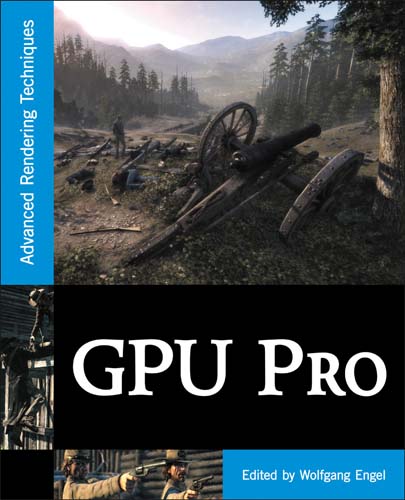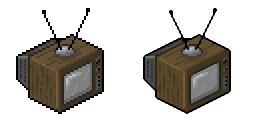I love the movie sequel title “2 Fast 2 Furious”. How clever, and a great way to guarantee there will never be a third movie. Well, there was, but they had to go the colon route, “… : Tokyo Drift”.
Which is indicative of nothing, as I don’t think I’ve ever actually seen any of these movies. I was reminded of the title as my goal today is to whip through the backlog of 72 potential blog resource links I’ve been gathering on del.icio.us. [Well, as it turns out, I got through 39 of them (the fresher ones), 33 to go…]
ShaderX^7 has been published. We hope to give it an overview sometime soon (mine’s on backorder from Amazon.com).
From various source I heard that OnLive got a bit of notice at GDC. Think: pure server-side computation of all graphics for a game, i.e., a cloud computing model. Now even your grandma’s computer or even a rigged-out TV can play Crysis, assuming the net bandwidth is there. Which of course makes me think: what about latency? Lag for how other players see your action is always there, and causes mismatches (“how did I instantly die?”). But increasing lag for you seeing the consequences of your own actions seems like a non-starter for shooters, at least.
Mark DeLoura has a great two-part article on what game engines are licensed for titles. First part is a general survey, second is about the technology involved. I found it interesting to see what people cared about, e.g. multicore is on people’s minds. Nothing too shocking here, but it’s fantastic to see what is getting used, and why, in this marketplace.
Related to this, I happened across a list of game engines on wikipedia. Not massively useful (e.g. no sense of what’s popular), but a starting place.
John Ratcliff has a graphics math library available for download with an unrestrictive reuse license. He recently added best fit methods for AABB’s and OBB’s.
I was interested to look at the open source, cross-platform (!) model viewer GLC. I’ve wanted something like this for doing some experiments with mesh manipulation. Not a bad viewer, but that’s all it is at this point, unfortunately: you can’t even export to a different 3D format. The search continues… If you know a reasonable open source 3D file viewer/converter out there, please tell me. I should probably bite the bullet and just use Blender, but this application is way overkill.
CUDA voxel rendering – pretty impressive!
I liked this post on optimization mainly because of the line “I went in and found out that some title bar was getting rendered 140 times every time you refreshed the screen”. I can entirely relate (though 140 must be some kind of record): too many times I’ve put output debugging statements showing updates, only to see 2,3,6 updates happening. I once started on a project and in the first few weeks increased performance by 100%, simply by noting the main draw path was being executed twice each frame.
Speaking of performance, there’s an article on volume rendering optimizations when using a ray-casting approach on the GPU.
Wolfenstein source code for the free iPhone version, along with Carmack’s documentation on the project, is available.
Software patents are only slightly dumber than business method patents, which are patently absurd. I hadn’t noticed until now, but there was recently a ruling on a business method patent, In re Bilski, which has been used to strike down software patents.
A detailed data and execution flow diagram for the new DirectX 11 pipeline front-end is available from Jolly Jeffers.
People are still making ray-tracing specific hardware; witness Caustic Graphics. They have a rather amazing claim: “The CausticOne, however, thrives in incoherent raytracing situations: encouraging the use of multiple secondary rays per pixel. Its level of performance is not affected by the degree of incoherence.” Good trick. That said, I can’t say I see any large customer base for such a product. This seems like a company designed for acquisition, similar to Ageia. Fine by me, best of luck to them.
I’m happy to learn that the Humus site now has a news blog. This is a great site for demos of advanced techniques, and for honest comments about strengths and limitations of various approaches.
Another blog: The Geeks of 3D. Tracks demos, APIs, SDKs, and graphics card releases. Handy – some of the links here I found there.
There was a nice little article on data alignment on Gamasutra. Proper alignment is a key element in getting high performance.
I was trying to find the name of the projection of equidistant latitude and longitude lines for a surrounding spherical environment. From this interesting page (click on the “Wall Maps of the World” text) I found it: Plate Carrée.
Predicting the future is so much more interesting than predicting the past. I love this: MIPS per $1000. It’s entertaining to equate raw computing power with structured processing. By the same equivalence, I should be able to hook up 1700 mice in parallel to get a human brain.
A great line from a GPU review: “Nvidia’s new line of unbelievably expensive cards will block out the sun, and ray-trace its own shadow in real time.”
Faber College’s motto is “Knowledge is Good”. Learning about the idea of metamers would have saved this article from confusion. Coming back to this article now, I see all the comments have been removed, and an apologia trying to convert confusion into enlightenment added, but I think this still misses the point. Sure, there is a color associated with a single wavelength of light. But, my guess is that 99.99% of the colors we perceive arrive at any location on the eye as light with a spectral mix of wavelengths, not a single wavelength (Naty will correct me if I’m wrong). Unless you’re Dr. Evil and deal with sharks with frickin’ laser beams on their heads on a daily basis. Hmmm, I’m probably forgetting some other single-wavelength phenomena, like fluorescence. Anyway, the article did lead me to look up more information on metamers on Wikipedia, where I learnt about metameric failure, a term I hadn’t heard before. One more reason a simple RGB representation of color isn’t sufficient.
Cute thing: Snapily lets you turn some set of images or video into lenticular prints.
I don’t have a lot to say about what I do at Autodesk. Here’s a tidbit.
Art for the day, crayons as pixels.
 I was waiting around a bit for my younger son’s doctor’s appointment this morning, so I decided to edit a book. I finished it just now, it’s called
I was waiting around a bit for my younger son’s doctor’s appointment this morning, so I decided to edit a book. I finished it just now, it’s called 












